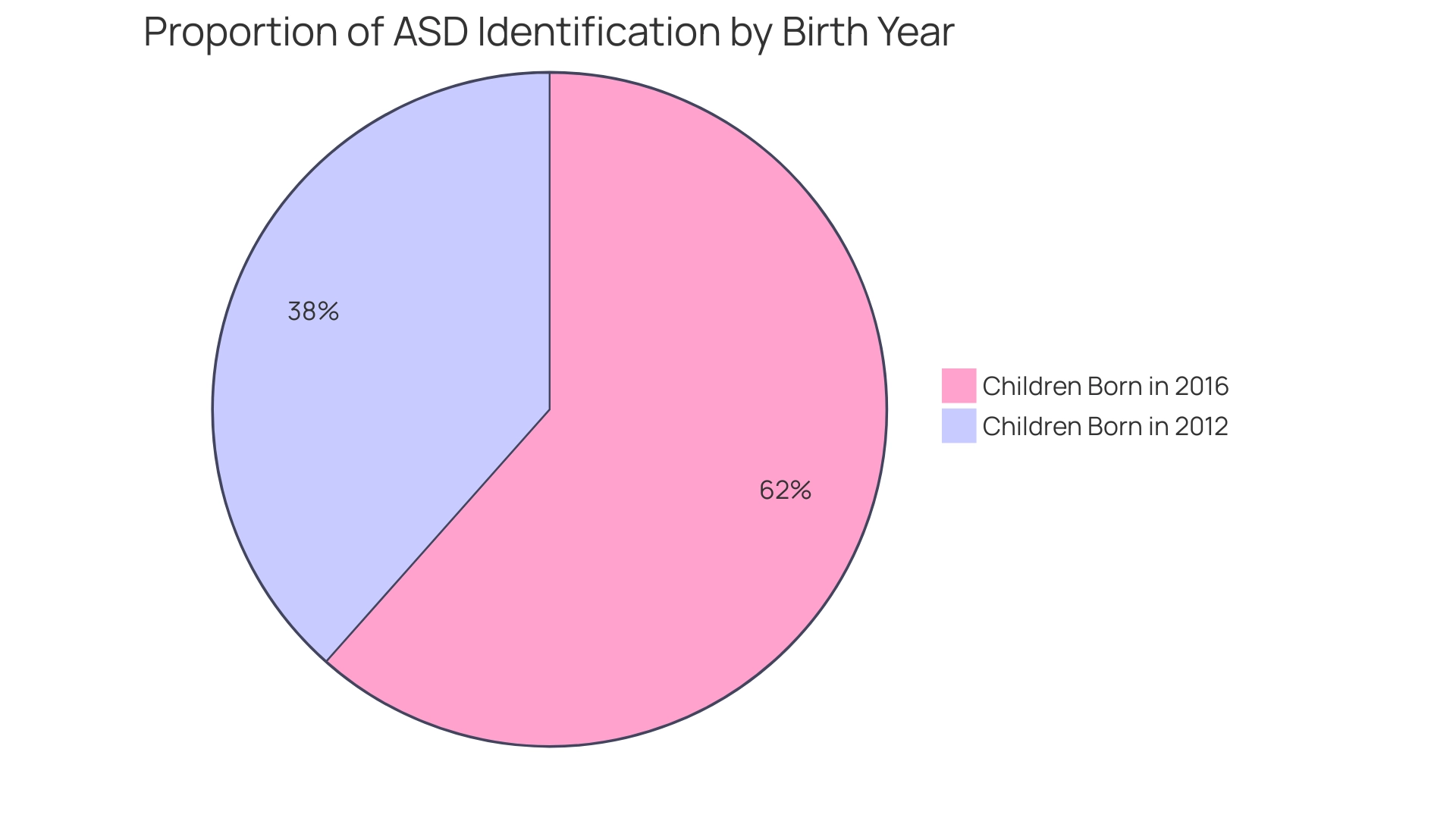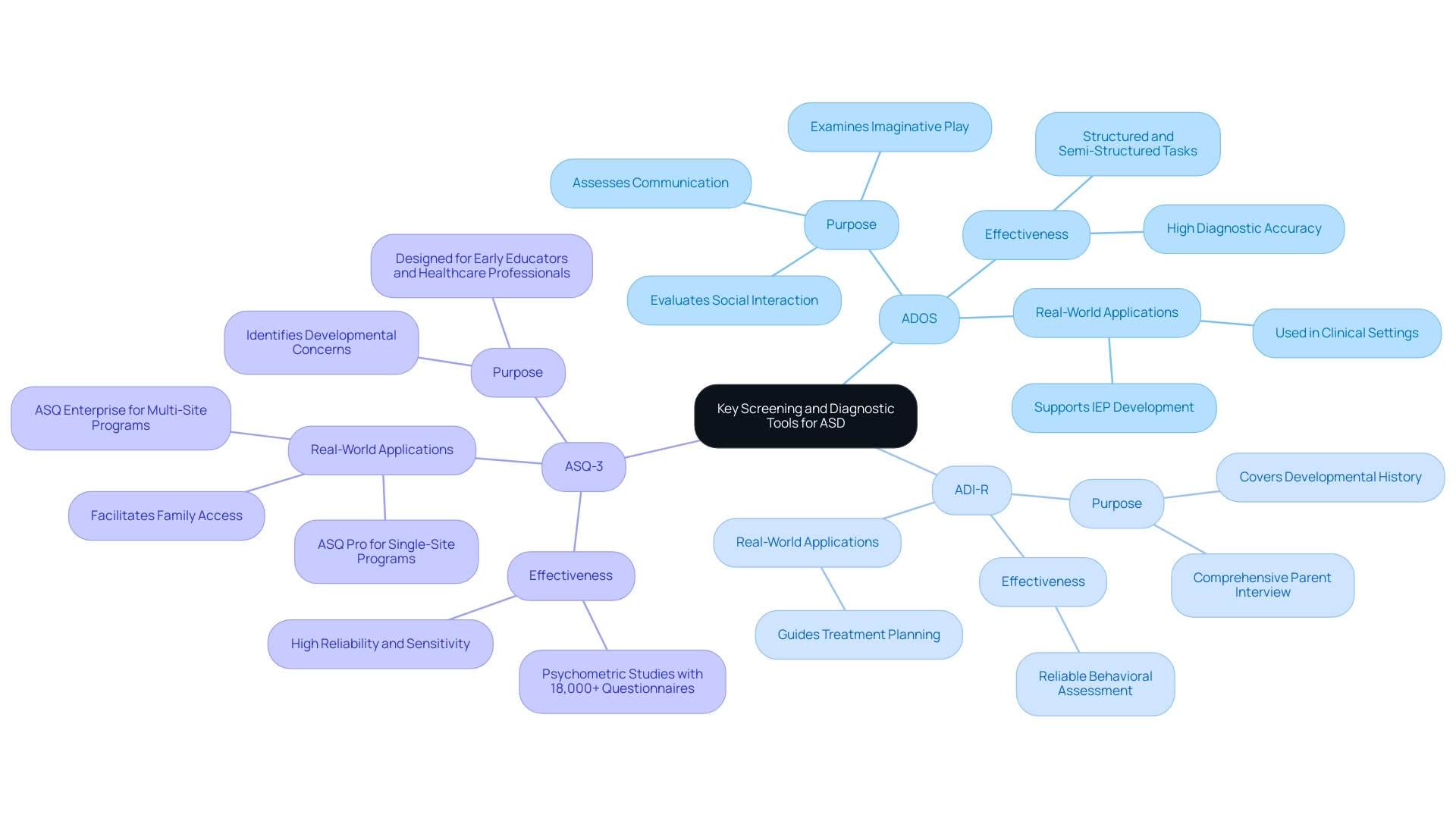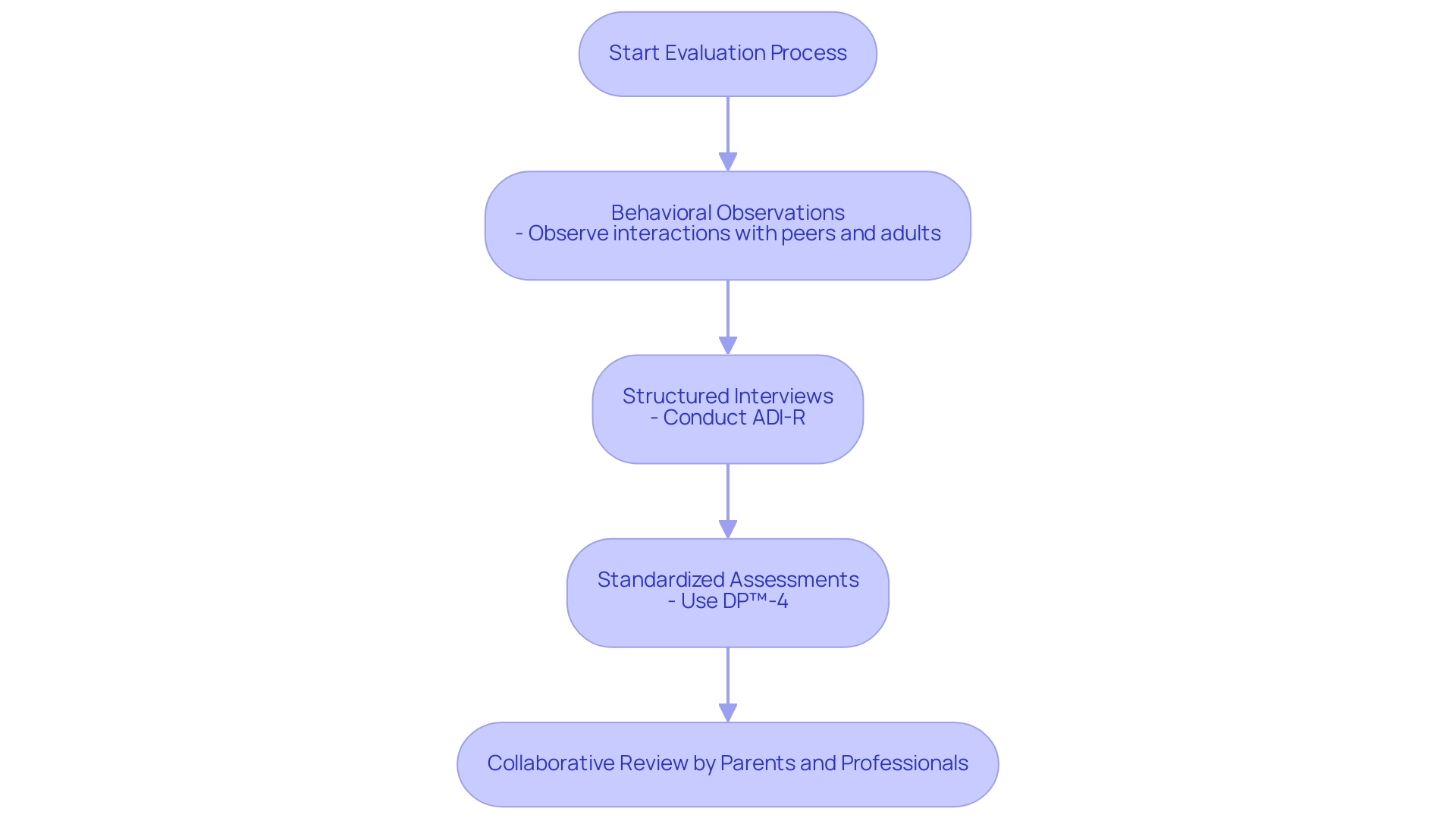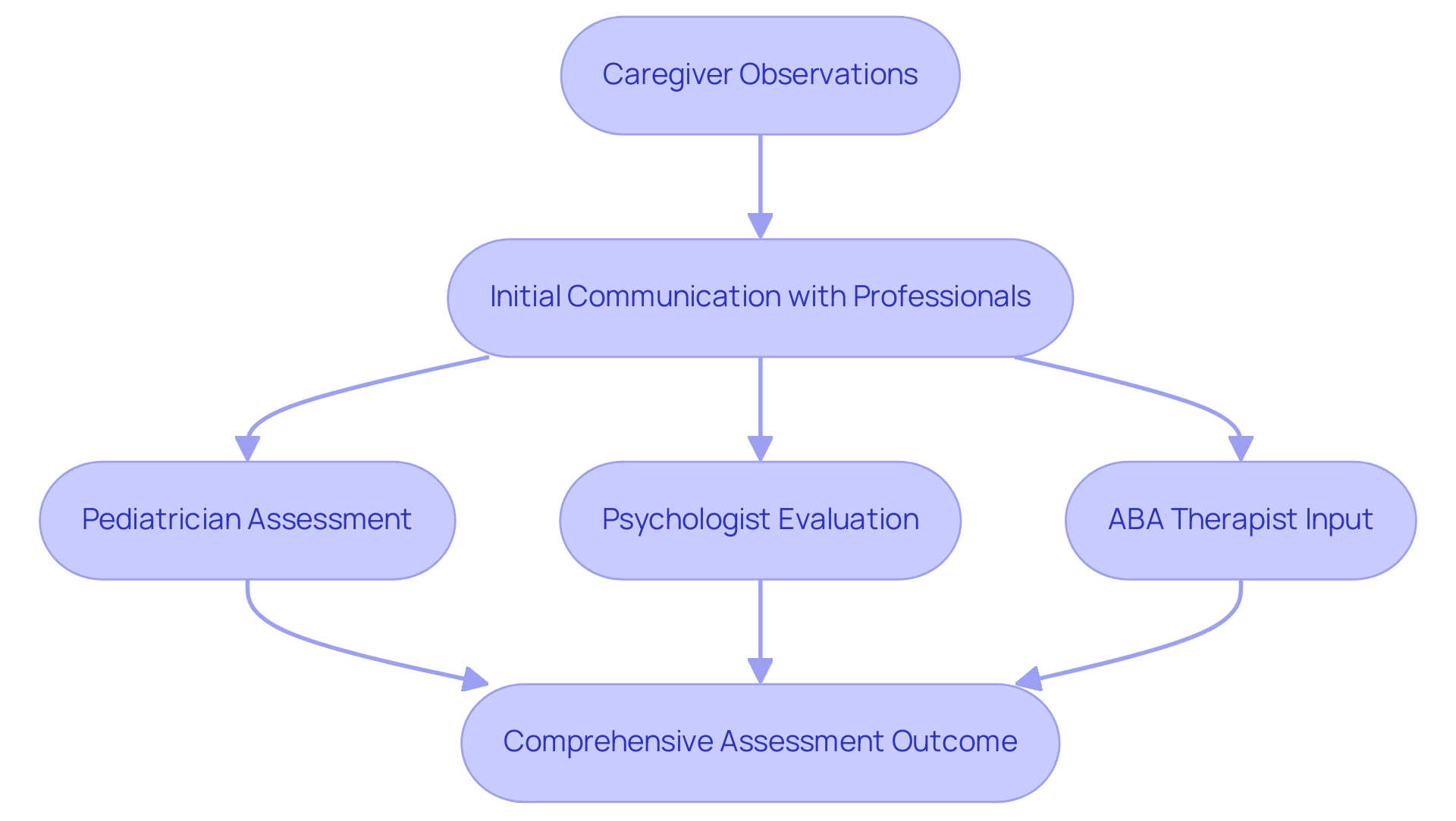Introduction
Navigating the world of Autism Spectrum Disorder (ASD) can be daunting for parents, especially when it comes to ensuring their child receives timely and accurate evaluations. The significance of early diagnosis cannot be overstated, as research reveals a growing trend in ASD identification among young children. With the right screening and diagnostic tools, parents can play a pivotal role in this process, advocating for their child's developmental needs.
From understanding key assessment instruments to collaborating effectively with healthcare professionals, this article provides essential insights and practical strategies to empower parents on their journey. By staying informed and actively participating in evaluations, families can pave the way for brighter futures for their children with ASD.
Understanding the Importance of Early ASD Evaluation
Early evaluation for autism spectrum disorder (ASD) is crucial in recognizing developmental concerns at the earliest possible stage. Recent findings reveal that individuals born in 2016 are 1.6 times more likely to be identified with ASD by age four compared to those born in 2012. This increase highlights the growing awareness and the urgent need for early diagnosis. Research consistently demonstrates that early diagnosis significantly enhances social skills, communication abilities, and overall quality of life for individuals with ASD.
Parents should remain vigilant for signs of ASD, such as:
- Delays in speech
- Delays in social interaction
They should seek evaluations promptly if any concerns arise. Interacting with healthcare providers, educators, and specialists can result in timely evaluations and interventions, which are essential in supporting the development of the young one and enhancing family dynamics.
For instance, youngsters who receive early behavioral interventions often demonstrate remarkable progress in their social interactions and academic achievements. Case studies, such as those from the ADDM Network, underline the urgency for early and equitable access to support services, revealing that 1 in 36 eight-year-olds are now identified with ASD. These statistics underscore the profound benefits of early diagnosis and intervention, paving the way for better outcomes and a brighter future for children with ASD.

Key Screening and Diagnostic Tools for ASD
Comprehending and employing the appropriate screening and diagnostic resources is essential when assessing Autism Spectrum Disorder (ASD). Key instruments such as the Autism Diagnostic Observation Schedule (ADOS) and the Autism Diagnostic Interview-Revised (ADI-R) are highly regarded for their accuracy and reliability. ADOS, for example, is a standardized diagnostic instrument that evaluates social interaction, communication, play, and imaginative use of materials through structured and semi-structured tasks. The ADI-R, on the other hand, is a comprehensive interview with parents that covers the child's developmental history and current behaviors.
The effectiveness of these instruments is well-documented. Recent psychometric studies involving over 18,000 questionnaires have shown that the ASQ-3, priced at $325.00, exhibits high reliability, internal consistency, sensitivity, and specificity. This emphasizes the significance of utilizing validated resources like ASQ-3 in the evaluation process, acting as a cornerstone for identifying potential developmental concerns.
Experts like Dr. James W. Partington emphasize the value of detailed scoring instructions and individualized education program (IEP) development guides, which are instrumental in interpreting results and planning personalized interventions. He asserts, 'The Scoring Instructions and IEP Development Guide explains scoring, skill tracking, and how to use information from the completed Protocol to develop an effective IEP.'
Real-world applications, such as the case of ASQ Pro and ASQ Enterprise, demonstrate how online management solutions can streamline the screening process and enhance accessibility for families. These instruments not only enhance the efficiency of ASQ-3 screenings but also offer parents easier access to necessary resources via ASQ Family Access.
In light of recent developments, newer versions of these tools continue to be refined to meet evolving needs. For instance, updates to the Autism Diagnostic Observation Schedule in 2024 have further enhanced its diagnostic accuracy, making it a cornerstone in ASD assessments. As a parent advocate, staying informed about these advancements and discussing them with healthcare providers ensures that your offspring receives a thorough and comprehensive assessment.
Proactive engagement with pediatricians during routine check-ups is also essential. Many pediatricians perform preliminary screenings, and expressing any concerns early on can lead to timely and effective interventions. By becoming acquainted with these tools, including the ASQ-3, and actively engaging in the assessment process, you can advocate more effectively for your offspring's developmental needs.

Approaches to Conducting an Effective ASD Evaluation
Conducting a thorough evaluation for Autism Spectrum Disorder (ASD) involves a multifaceted approach that combines behavioral observations, structured interviews, and standardized assessments. A critical component of this process is the observation of a young person's interactions with peers and adults, which helps assess communication skills and identify repetitive behaviors. These comprehensive behavioral observations are essential for understanding the individual's unique patterns and challenges.
Parents play a crucial role in this assessment process by sharing detailed insights about their offspring's behavior across various settings. This information is invaluable, as it allows professionals to gain a holistic view of the young one's development. Structured interviews, such as the Autism Diagnostic Interview-Revised (ADI-R), provide a framework for in-depth discussions about the individual's developmental history and current issues, further enhancing the evaluation.
Moreover, tools like the Developmental Profile 4 (DP™-4) can be instrumental in conducting detailed assessments. Priced affordably starting from $29.00, with a total cost of $5,508.00, the DP™-4 offers a comprehensive way to assess young ones. By actively engaging in the review process, guardians can ask relevant questions and supply crucial information, ensuring that the assessment is customized to their child's unique requirements. This collaborative effort ultimately leads to more accurate diagnosis and effective interventions.

Collaborating with Professionals for a Comprehensive Evaluation
To ensure a thorough assessment for autism, cooperation between guardians and specialists such as pediatricians, psychologists, and ABA therapists is essential. Effective communication plays a pivotal role in this process. Research suggests that when caregivers actively work with professionals, the effectiveness of autism assessments rises considerably, with studies demonstrating that 85% of successful assessments include comprehensive caregiver input. By sharing detailed observations, concerns, and pertinent information about their offspring's behavior, caregivers can provide valuable insights that might otherwise be overlooked. It's advantageous to participate in assessments equipped with a list of questions and concerns to guide the discussion and ensure thorough coverage of all issues.
Establishing a solid connection with evaluators promotes a cooperative atmosphere where caregivers feel encouraged to share their insights and advocate for their child's needs. This collaboration is crucial not only for the assessment but also for formulating an effective intervention strategy.
The field of applied behavior analysis, although younger than speech-language pathology, emphasizes family-centered care and collaboration. As one expert noted, 'When we can model positive collaboration and support other professions with the literature to support that, that's how we start to move forward in these practices.' This highlights the crucial role of parent involvement in assessments. Case studies further illustrate the importance of understanding different professional approaches to ensure client-centered care. By embracing these collaborative practices, evaluations can become more comprehensive and effective, ultimately benefiting the child's development and well-being.

Conclusion
Understanding Autism Spectrum Disorder (ASD) begins with the crucial need for early evaluation. Promptly identifying developmental concerns can lead to significant improvements in communication, social skills, and overall quality of life for children with ASD. As awareness of ASD increases, parents are encouraged to stay vigilant and proactive in seeking evaluations, as early diagnosis and intervention can greatly enhance outcomes.
Familiarity with key screening and diagnostic tools is essential. Instruments such as the Autism Diagnostic Observation Schedule (ADOS) and the Autism Diagnostic Interview-Revised (ADI-R) provide reliable assessments that can shape a child’s developmental journey. Collaborating with healthcare professionals and utilizing these validated tools ensures a comprehensive evaluation tailored to the child's unique needs.
A thorough evaluation combines behavioral observations and structured interviews, with parents playing a pivotal role by sharing insights about their child’s behavior in various settings. This collaboration enhances the effectiveness of evaluations, ensuring that valuable information is captured.
Empowering parents with knowledge and resources is vital in navigating ASD evaluations. By actively participating in the process and advocating for their child's needs, parents can significantly influence assessment outcomes and interventions. This engagement not only supports the child's development but also builds a positive relationship with professionals, fostering a supportive network for the family.
Through awareness, collaboration, and dedicated advocacy, parents can help create a brighter future for their children with ASD.




